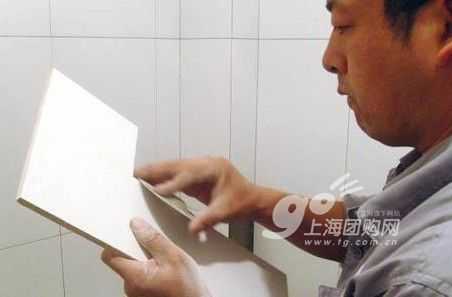Summer tile advantages How to choose high quality tiles?
Among the many decorative materials, tiles are undoubtedly the most refreshing decorative materials. In summer, barefoot walks on the tiled floor in the room, and the cool air will pass along the toes and will completely disintegrate the heat. In the bathroom, the ceramic tile is more "waterproof", non-slip, and easy to clean. The colorful styles and colors of the tiles add a lot of color to your home.

Brand Shop: Smic Tiles
Pick glazed tiles
It mainly depends on the treatment of ceramics and glazes. The size of the ceramic tiles should be uniform and uniform with uniform thickness; the difference between the thickness and size of ceramic tiles of the same size should not exceed 2 mm. The quality of the glaze is even more critical. First, the enamel should be thick and smooth; second, the glaze color should be as small as possible. The bathroom is suitable for small tiles.
The style and quality of domestic tiles, especially the treatment of glazes, are still quite different from imported brands. At present, the more common imported tiles are mainly from Italy, Spain, Taiwan and South Korea. Italian tiles dominate with their excellent quality and high prices. Italian tile culture has a long history. In modern Italian homes, the use of ceramic tiles has surpassed its traditional protective functions, and more emphasis has been placed on the function of decoration.
Why is the price of imported tiles "expensive"
We have previously described a host who loves the style of Italian bees tiles, but because it is too expensive, it is second only to choose the “Hangu†bricks that are similar to “Bees†tiles. To his satisfaction, after the renovation was completed, a friend who was doing building materials came to visit his house and actually thought that he was using "bees" tiles. Italian "bee" tiles and "Changgu" tiles have similarities in color and size. However, the price of “bees†tiles was mostly two or three hundred yuan per square meter, while the price of long-run bricks was reduced by nearly half. In fact, imported Italian tiles generally have some characteristics, such as a small area of ​​the single piece, the surface emphasizes a sense of texture and three-dimensional, high color saturation.
Many domestic manufacturers have already begun to introduce foreign advanced glazes, and they also draw on foreign styles in their design. It should be said that there could be many alternatives, but the reporters saw that domestic brands that can “be real†are very few. . People who are fond of Italian style are often trapped by price. Reporters in the spider tile store can not help but be afraid of the price, most of the wall tiles are based on chip pricing, specifications are mostly 100 × 100mm, each price is 2.9 yuan, of course, can be inferred that a square meter of the price of nearly 300 Yuan; and hand-painted single-chip will be more than 80 yuan, the waist line is fine to discuss the root to sell, a hand-painted waistline price is also more than 60 yuan. The seller of the spider tile explains to the reporter that the price of imported tiles is expensive, and the relevant tax factors, of course, the exquisite production process and production costs are the key, especially the treatment of glazes, foreign baking technology is a high-tech content of. Imported bricks are laid on the ground or on walls, and the effect is absolutely eye-catching. Their floor tiles, imitating the texture of natural stone, differ in the texture and color of each block, and are naturally different from domestic bulk production.
Tiles Home Furnishing Decor Interior Decorators Home Decorations Decorators Bathroom Tiles Bathroom Tiles Bathroom Wall Tiles Bathroom Size Toilet Waterproof Price Bathroom Design Toilet Waterproof Bathroom Tiles Tiles Tiles Size Decoration Home Decor Tiles
